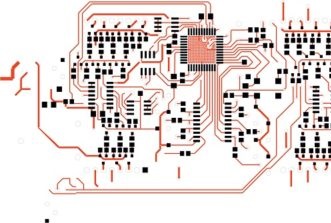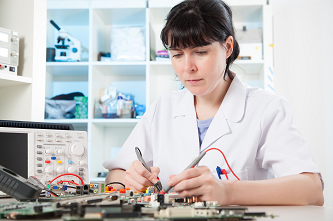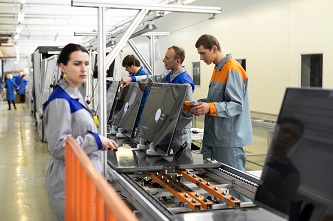This website uses cookies so that we can provide you with the best user experience possible. Cookie information is stored in your browser and performs functions such as recognising you when you return to our website and helping our team to understand which sections of the website you find most interesting and useful.
Clean Hydrogen Generation with Cuprous Oxide
European researchers are making significant strides in the development of low-cost light-harvesting semiconductors aimed at converting water into clean hydrogen fuel. The cuprous oxide semiconducting materials being utilized are not only inexpensive and abundant but also non-toxic. Despite these advantages, their performance has traditionally lagged behind silicon, the dominant material in the semiconductor market.
However, a team of researchers led by the University of Cambridge has uncovered a promising breakthrough. By growing copper oxide crystals in a specific orientation that facilitates the movement of electric charges diagonally through the crystals, the team has achieved a remarkable enhancement in performance. Tests conducted on a copper oxide light harvester, or photocathode, using this innovative fabrication technique demonstrated a 70% improvement over existing state-of-the-art oxide photocathodes, along with enhanced stability.
The collaborative research effort involved partners from École Polytechnique Fédérale de Lausanne, Nankai University, and Uppsala University. The team's findings underscore the potential for fine-tuning low-cost materials to produce sustainable fuels that can be efficiently stored and utilized within current energy infrastructure.
Copper (I) oxide, also known as cuprous oxide, has long been considered a promising alternative to silicon due to its ability to capture sunlight and convert it into electric charge. However, the material has faced limitations, with a significant portion of the charge being lost, impacting its overall performance.
Dr. Linfeng Pan from Cambridge’s Department of Chemical Engineering and Biotechnology highlighted the intrinsic challenges faced by cuprous oxide, emphasizing the importance of addressing issues related to light absorption depth and charge travel distance within the material. Professor Sam Stranks, who spearheaded the research, emphasized the critical role of crystal growth in determining the material's performance.
To position cuprous oxides as viable contenders to established photovoltaic materials, optimization efforts are essential to ensure efficient generation and movement of electric charges when exposed to sunlight. One potential optimization strategy involves the use of single-crystal thin films, characterized by a highly ordered crystal structure. While the production of such films is typically complex and time-consuming, the researchers were able to grow high-quality cuprous oxide films using thin film deposition techniques at ambient pressure and room temperature.
By meticulously controlling growth and flow rates in the chamber, the team successfully oriented the crystals in a specific direction. Through advanced spectroscopic techniques, they observed how this orientation significantly impacted the movement of electric charges within the material. The findings revealed that electrons moving through the crystals along a body diagonal pathway exhibited a tenfold increase in travel distance, leading to enhanced performance.
Professor Stranks expressed excitement about the potential of these materials, emphasizing the need for further research to fully comprehend and optimize the observed phenomena. The tests conducted on cuprous oxide photocathodes utilizing this novel technique showcased a remarkable performance increase of over 70% compared to existing oxide photocathodes.
While acknowledging the necessity for continued research and development, the researchers are optimistic about the role cuprous oxide and related materials could play in driving the energy transition. The journey towards harnessing the full potential of these materials promises to yield fascinating scientific insights and transformative advancements in clean energy technology.
Sources: www.cambridge.ac.uk













